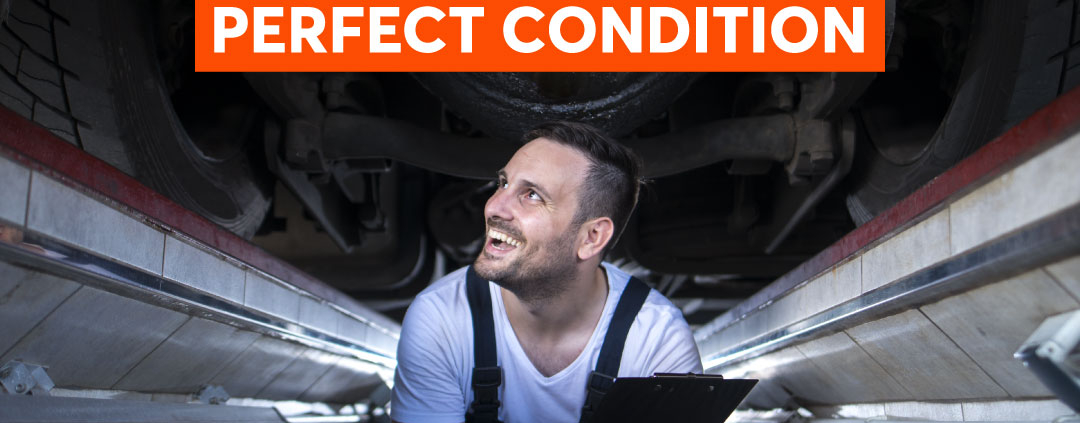Freight transportation through Europe involves a series of processes and essential certificates so that fleets can complete their routes with maximum safety and comfort, some of which involve the payment of taxes. To this end, it is important to understand the tax refund process. Andamur can tell you all you need to know about certificates, […]

Keeping the lorry in good condition is essential to ensuring the safety of fleets and transported goods. Inadequate vehicle maintenance can be the cause of accidents and other unforeseen events while driving.
We at Andamur want to give you 6 tips to keep your lorry in perfect condition and prevent any issues at the wheel. Keep reading!
- Inspect the tyres
Tyres on lorries transporting goods bear heavy weights. That’s why checking that they have the right pressure, and cleaning and inspecting them will help to detect any problems or damage to the tyres, such as stones in the treads, cuts, cracks…
As well as checking them, they must be changed when necessary to avoid accidents and other problems on the road.
- Check and change the oil when necessary
Checking the oil level often and changing it when indicated by the manufacturer is essential. This will help extend engine life, improve lorry performance, achieve improved fuel economy and protect the emission system.
- Check the trailer insulation
Checking the trailer insulation is essential to prevent rain or wind from damaging the load and causing other problems for the vehicle. To do this, the walls, floor, doors and roof of the lorry should be thoroughly inspected before setting off on a journey.
- Keep the lorry clean
Besides the importance of cleaning it to take care of its outer appearance, washing the lorry extends the life of the paintwork and prevents dirt from accumulating on the underbody of the vehicle, thus avoiding rust.
- Look after the braking system
Bad brakes can cause a lorry not to stop when it needs to. That’s why keeping the brakes in good condition is one of the most important tasks for any vehicle.
Maintaining the brake system must be taken care of down to the last millimetre. It is therefore important to check the fluid level and change discs and pads when necessary.
- Examine the engine
Checking the engine frequently for damage can prevent accidents and costly repairs. It is important to check connectors, cables and the various fluid levels: coolant, engine fluid and oil.
- Remember to run check ups
Although it seems obvious, it is important to follow the instructions from the professionals and to go to the workshop to have the lorry completely overhauled. Also, remember to check when you have to pass the MOT.
At Andamur #WeTakeCareOfWhatMatters. For this reason, the professional driver’s safety is of paramount importance to us. Take care of yourself at the wheel!
At Andamur, we are committed to promoting healthy living and sports. That is why we take actions that are focused on caring for drivers and for our customers, such as offering quality healthy food in the restaurants of our Service Areas, making sport available to our customers by providing facilities such as the gym in […]

In bad weather, driving a truck becomes even more difficult. Rain and other adverse weather conditions such as snow and fog have a direct impact on road conditions which, in turn, affect how you drive.
Therefore, Andamur, following some General Directorate of Traffic indications, gives you some tips to drive your truck more safely in bad weather:
- Increase the safety distance. Rain and snow cause tyres to lose grip, so increasing your safety distance is key should an unforeseen event occur.
- Watch out for the first drops. The danger starts as soon as the first drops fall, as they mix with the materials and substances that impregnate the surface, creating a highly slippery film. Doubling the braking distance will help to ensure safety.
- Foresee. Don’t let your guard down at any time, especially in adverse weather conditions. Observe your surroundings carefully, looking as far in front as possible to increase your field of vision, which allows you to “see without looking”, which is typical of peripheral vision.
- Check the weather forecast. Before setting off on your journey, you must check the forecast to avoid surprises at the wheel and to be able to adapt your driving to the weather conditions.
- Prepare your cab. Driving in total comfort is more important than we think. Maintaining a temperature between 20°C and 22°C inside the cab is ideal, in summer and winter alike. Higher temperatures can cause drowsiness and fatigue, reducing the ability to react.
- Slow down. You need to adapt speed to the level of visibility at any given moment, and to maintain a speed that allows the vehicle to stop in the event of a rear-end collision or other unexpected situation.
- Use high gears to prevent skidding. When driving up hills or around corners, use high gears to control the truck at all times and to prevent wheelspin and loss of vehicle control. It is also important to change gear smoothly.
- Turn the lights on in heavy rain. If it is pouring rain or the area you are driving in is cloudy, we highly recommend turning on your lights to improve visibility.
These recommendations are key to preventing aquaplaning, a phenomenon that occurs when the tyre does not adhere to the road due to rain, causing the wheels to float and possibly losing control of the vehicle.
Should this happen, the DGT recommends holding the steering wheel firmly, not braking hard and correcting the trajectory gently when grip is regained.
At Andamur, we’re committed to the well-being and safety of professional hauliers. Following these tips is the key to driving more safely and avoiding danger while out on the road.
Look after yourself at the wheel!





